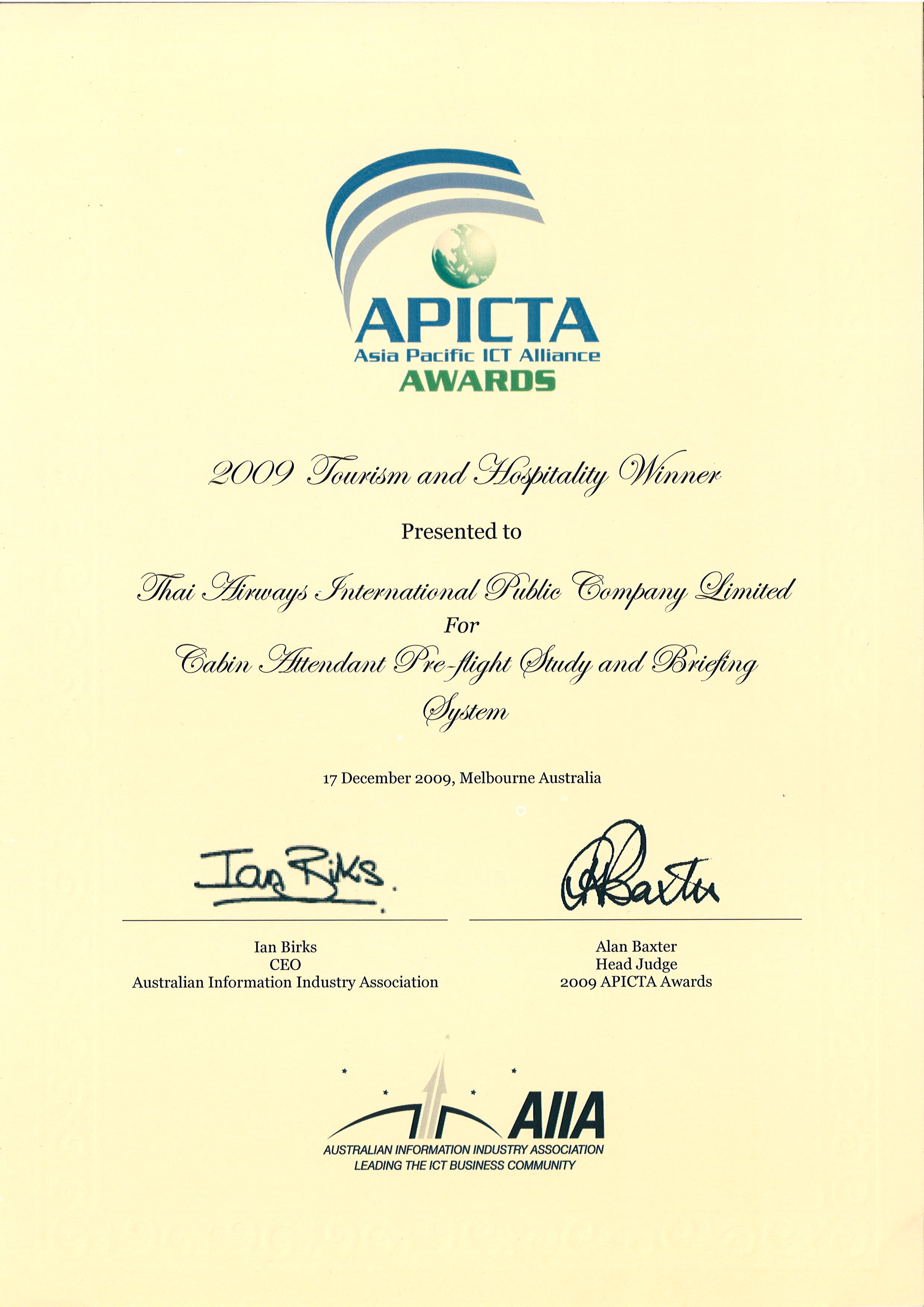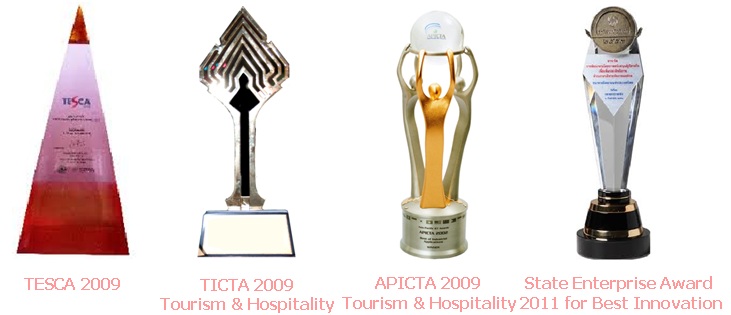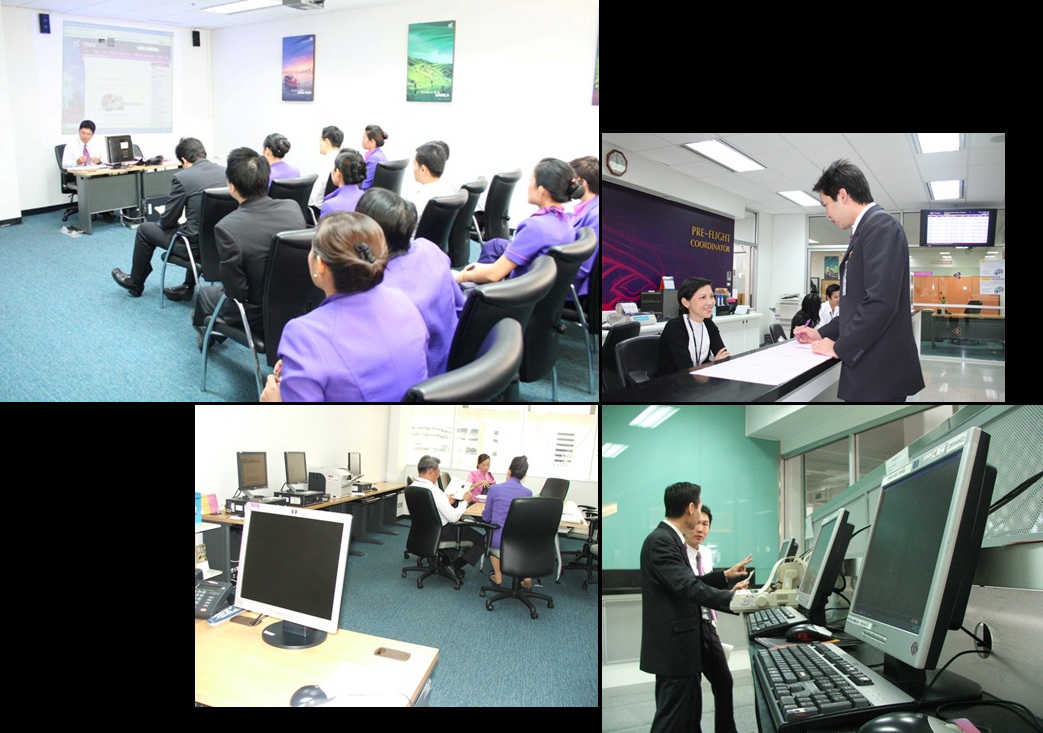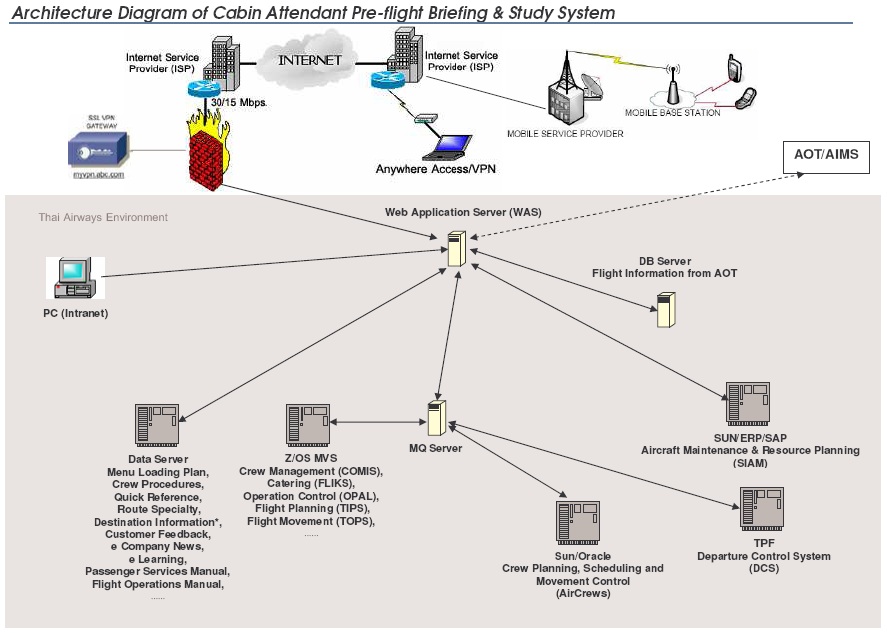Articles
| Name | Author |
|---|
Case Study: Great service whenever, wherever, whatever, however
Author: Jatooron Suwannarut, Department Manager IT Management, Operations, Thai Airways International
SubscribeGreat service whenever, wherever, whatever, however
THAI’s Cabin Attendant Pre-flight Study and Briefing System has revolutionised crews’ ability to deliver great service writes Mr. Jatooron Suwannarut, Department Manager IT Management, Operations, Thai Airways International
In light of the intense competition that is a hallmark of the aviation industry, a medium sized carrier has to place its hope for positive brand differentiation on delivering a superior service. Recognising and acting on this key principle helped Thai Airways International (THAI) to lift its business above the competition and into the forefront of service delivery among airlines worldwide. And the vehicle for this achievement was the airline’s C/A (cabin attendant) Pre-flight system. In this article, I’d like to explain about the C/A Pre-flight system project, how it applied technology to support better delivery of great service and how it was introduced to the business.
Recognitions and awards
The C/A Pre-flight system was initially introduced to the industry at the 1st Annual Airline and Aerospace MRO & Operations IT Conference – Asia/Pacific – Bangkok in October 2009. On the same day it was also submitted for the Thailand ICT Award (TICTA) 2009 where it won first place in the Tourism and Hospitality Category. From that point, it went on to win the Asia Pacific ICT Alliances Award (APICTA) 2009 in Melbourne, Australia. The latest accolade awarded to this system was the State Enterprise Innovation award from the Government of Thailand in 2011.


Project Philosophy
Airline businesses operate in a demanding market where most operators deploy high-tech and innovative solutions in an effort to attract customers; offering new generation aircraft, state of the art in-flight entertainment, luxurious 180-degree seats/beds and other attractive incentives. However, these technologies and features demand significant investment from airlines.
While there may be limited scope for airlines with less financial weight to invest in modern technologies, some remain determined to continue to develop by leveraging innovation and in-house expertise to compete. THAI is one of those airlines that has always concentrated on its unique qualities: the essence of Thai culture and hospitality is a theme running right through each journey. Taking care of every detail in the services available on board with attention to passenger comfort is something that flows naturally from the Thai culture, and the warm and gracious Thai hospitality of the cabin crew.
Cabin crews always want to deliver high quality service. So, building on this culture by providing a system with unlimited content and high security at anytime, anywhere, on any devices, the airline has ensured that crew are happy, able to work efficiently and effectively, and to be proud of the service they deliver. And customers can be delighted by in-flight services offered with a ‘THAI Smile.’
Now, crew can always access the technology they need to support service delivery. The C/A Pre-flight system created a new competitive edge for THAI, enabling remote pre-flight preparation for incoming flights in any competitor hub and supporting a competitive industry position. Development of the system has of itself been a major project for the airline.

First devised and developed in 2004 by the in-house team for the airline’s new hub at Suvarnabhumi Airport, the C/A Pre-flight system was designed to help THAI crews prepare for their next flight using advanced secured authentication
and internet access (SSL VPN[1] with OTP[2] Token) from all company and personal devices, including all types of mobile phone. Today the system offers crews a web-based application with Enterprise Application Integration (EAI) technology for accessing required content from various systems or applications in the company, such as Z/OS, TPF and distributed systems, and other external systems.
Features of the system
- A user friendly web application with one-key input for all content, serving IT users with various levels of competency, using all kinds of personal devices and networks, anywhere in the world.
- Access has been made possible through provision of computers and network facilities for THAI crew at major crew hotels around the world.
- The system fully supports crew pre-flight study, briefing and preparation. It also supports post flight activities such as cabin reports and crew evaluation.

- The system offers Text To Speech (TTS) for impressive customer service in 10 languages (including Chinese, French, German, Japanese, Korean and Russian).
- A good infrastructure is provided with highly secure authentication (OTP Token) and network (SSL VPN) allowing crew to remotely perform any company application, such as e-staff travel, e-personnel information and crew scheduling.
- The need for administration support has been minimized to avoid high staffing numbers.
- Content design is good and self-manageable by linking information from a single source with an easy upload and update capability for the content provider via simple software.
- It is the first time that a totally ubiquitous system has been offered, available to any authorized person, anywhere, at any time, on any device, for in-flight services and operations in various situations.
- The system can be accessed through company devices and crew member owned devices.
- The system is compatible with major operating systems – Windows, MAC OSX, Linux and with major browsers – Safari, Opera, Firefox, etc.
- The system can be accessed through mobile phones and…
-
- Works with SMS and secured internet.
- SMS queries can be made by free text input and programmable menu on SIM – Dynamic SIM Tool Kit (DSTK). THAI is the first airline to apply this DSTK technology.
- Secured internet covers five major platforms: Windows Mobile, OSX iPhone, Symbian, Android (Google Phone) and BlackBerry.
- Three major local mobile service providers support the system, AIS, DTAC and True, providing 98% coverage nationwide.
- A single phone number can send an SMS query to all mobile service providers as listed above.

Challenges faced and addressed
- Adopting the ‘own device’ approach
Airlines generally provide tools and devices for crew regardless of personal preference. However, that requires a large initial investment and high running costs to maintain the equipment. Also, some crew may refuse the company device as they do not want responsibility for it. But if they do accept, they will most likely carry their corporate device for corporate use as well as a personal device for personal use.
The system that THAI has adopted allows crew members to use their own devices on any platform. In other words, crew can get access to and use many applications within the system on their desktop computers, notebooks, tablets, smart mobile phones, and even basic mobile phones.
- Range of channels
Regardless of whether there is or is not local internet access, crew members can get the latest information wherever they are through SMS query and TG SIM[3], which are both available in addition to internet access.
- New competitive edge
Usually, crew are well prepared when flying from their home base and are able to gather all necessary information regarding passenger services and operations. However, this is not the case for in-bound flights away from base where there is limited information access and authentication requirement. The system creates a new competitive edge for THAI by supporting remote pre-flight preparation for incoming flights, in any hub.
- Overcoming resistance to change
Our crews span a range of ages, IT skills and preferences and, in the past, crew have sometimes been resistant to new corporate initiatives. To overcome this, a number of strategies have been implemented as follows.
- A project team was set up comprising around 100 crew members, including some on a voluntary basis and some who were selected. Most were involved providing information and comments on system requirements, and assisting with survey, design, R&D, strategic planning, new work process, training, communication, etc. This was to ensure that the new system offered real added value to end users.
- Prior to the official announcement of the system, senior crew were invited as pioneers for training. We conducted a closed-door training program for them to become ‘evangelists’ for the system so that, after the class, they would introduce the new system to others. That helped create a mutual understanding of why the change was needed and what value it could deliver.
- Pull strategy was employed to encourage all crew members to use the system on a voluntary basis, creating additional IT skills among crew members in a short period of time. A quarter of the total number of crew took in-class training in one year which was above the normal penetration for in-class training programs.
- A variety of self-learning materials were provided to crew members.
- Two facilitator teams were set up to support and make sure that our end users could access the system from their own devices. One served as a help desk during office hours and the other as a crew team with high levels of competency in IT skills. The second team was particularly valuable as they understood the problems and the workplace; hence could give appropriate advice or instruction whenever their colleagues asked for assistance.
Post-introduction survey, feedback and outcome
- The system has won considerable praise in the annual cabin crew satisfaction survey, getting the highest score in ‘Meet user requirements’ and ‘Increase Efficiency’ sections.
- The ratio of usage is high and increasing year on year. The average number of token connections per person is near 20 times per month.
- The survey also found that the system has become an essential communication channel for crew members.
- At the new crew terminal in Suvarnabhumi International Airport, THAI Flight Operations is able to deliver crew services with one third the number of administrative staff even though the new terminal is three times larger than the previous one.
THAI is the first airline to have devised Cabin Attendant Pre-flight Study and Briefing System software. In summary, the software has introduced an on-line real time system delivering pre-flight information for crew members using any platform and on any personal device (including smart and basic mobile phones) via highly-secure internet and SMS. A key factor in the project’s success has been the active participation of the cabin crew at every step of the system’s development. During the four years that the project has run, users, programmers and project managers have all worked very closely together to realise the dream they shared from day one.
Comments (0)
There are currently no comments about this article.

To post a comment, please login or subscribe.